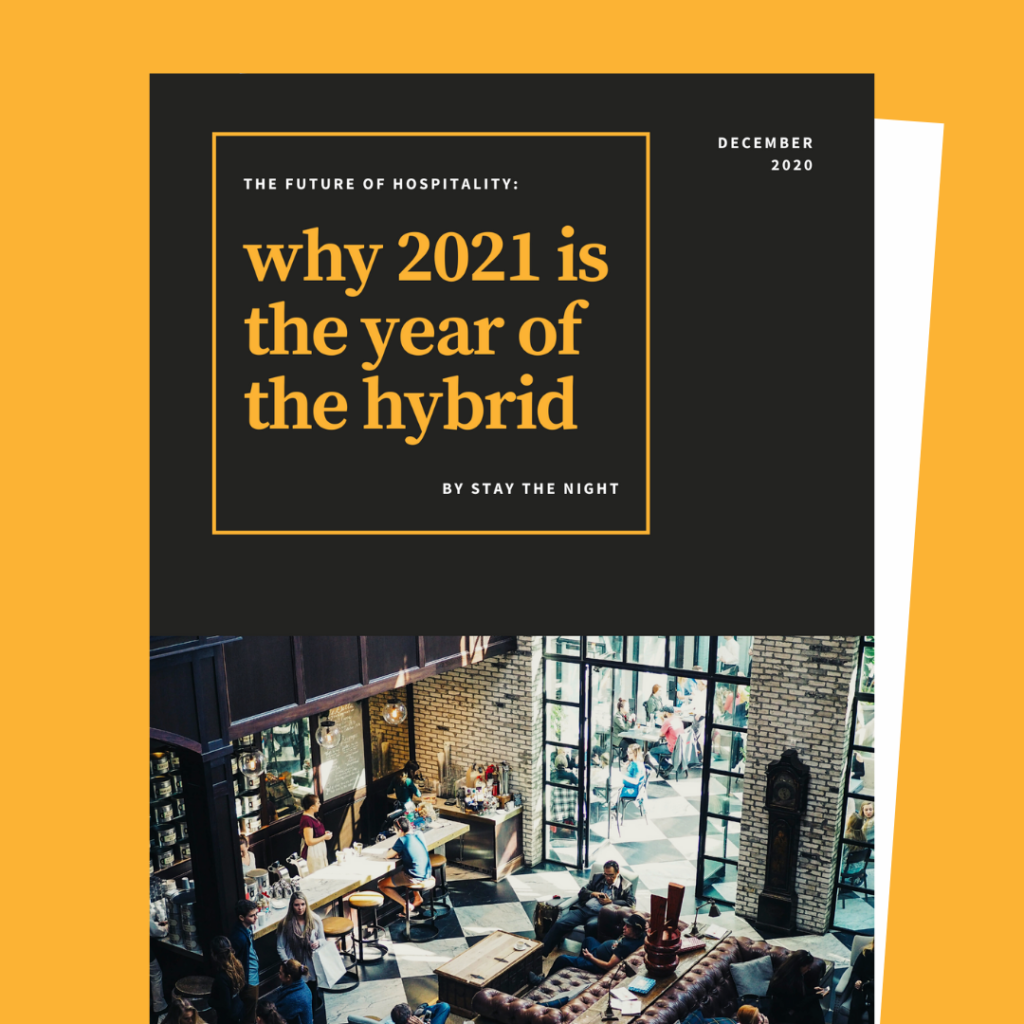Is your marketing community-focused? So often we see hospitality businesses who strive to put community at the heart of what they do, but fail to communicate this effectively in their marketing.
This creates a disconnect between your marketing and your onsite experience which means your online audience may fail to see what you truly offer – basically, you will be selling yourself short!
Our view is that brands who create real connections built on their audience’s common values will see huge benefits and become far more resilient in the long-term – which is why we put together this introduction to community marketing for hospitality brands.
WHAT IS COMMUNITY MARKETING?
In simple terms, it is a marketing strategy where the main focus is building a community for your customers – known as a ‘brand community’.
While communities have existed for as long as human beings have, brand communities are a relatively new concept. It’s important to note here that brand awareness does not equal brand community – just because you have thousands of followers on social media or a huge email list, for example, doesn’t mean that these people are automatically part of an engaged brand community.
Community marketing efforts require brands to start conversations and establish opportunities for meaningful connections – like groups or events – between their audience members. While many hospitality brands do this successfully on site, it’s important to also integrate this community-centred approach into your marketing.
Although some of the techniques may be the same, community marketing differs from traditional marketing because it places relationship building – rather than selling – at its core. It’s a long-term process that requires trust and time, but it gives you an opportunity to connect with your target audience on a much deeper level.
When done right, community marketing is a win-win for both your business and your audience. It serves both organisational goals – for example, boosting brand awareness, growing your audience and ultimately increasing revenue – while also enriching the user experience for those who engage with your brand through your marketing channels.
WHAT ARE THE BENEFITS FOR YOUR BUSINESS?
One of the core aims of many hospitality brands is to bring like-minded people together – making your marketing more community-centric ensures your content and communications are in line with your brand’s wider mission.
Aside from this alignment, there are many tangible business benefits you will see from investing time and resources in this strategy. Community marketing will help you to:
- Drive innovation – Communities give brands unfiltered access to some of their most dedicated consumers, providing valuable market insights and critical feedback. Being able to organically connect with your community and tap into their needs, wants and desires allows your brand to innovate both your marketing strategy and overall offering in order to meet the needs of your target audience. This also gives you a huge edge over your competitors.
- Grow brand loyalty – Taking the time to build genuine, authentic and human connections with your audience will lead to your members becoming increasingly loyal to your brand. Strong and engaged communities are filled with brand ambassadors who will go above and beyond to support and recommend businesses with who they have had good experiences – both online and offline.
- Become more resilient – If you are looking for proof of the importance of community, then look no further than the events of the past year – businesses with a community already behind them have been much better placed to withstand the negative effects of the COVID-19 pandemic. We have seen customers rally around the brands they love and support them through this time.
- Reduce long term marketing spend – We know, a marketing agency telling you how to reduce marketing spend! But it’s true – building a community costs less in the long-term when it comes to your marketing. This is because when brands focus first on meeting the needs of their members, they will then need to spend less in the future to attract new custom. Members who have had great experiences with, and feel an affiliation to, your brand are more likely to refer you to their friends and wider networks. In the long term, this means you are less dependent on receiving the majority of your reservations and revenue via OTAs or marketing mediums such as paid ads.
- Increase revenue – Ultimately, with the combined benefits we have mentioned above, adopting a community marketing strategy will have a big impact on your bottom line.
WHAT ARE THE BENEFITS FOR YOUR AUDIENCE?
Online communities provide a sense of belonging to their members – members feel part of something, connected to both the brand and the brand’s wider audience.
A key part of community marketing – which we will go into more detail on later in this article – is the act of really getting to know your audience beyond simple demographics.
This involves much more actual interaction with your audience than in traditional marketing – from engaging in genuine conversations to asking your audience to give their opinions on different topics. In this way, your audience feel valued and part of a wider conversation.
Engaging with your audience in this way will also improve your marketing content – you will be able to tailor your content and communications to their specific interests and needs, so as well as feeling valued by your brand they will also find true value in your marketing. Giving your audience real value in your marketing is the best way to rise to the top in any industry.
Focusing on community also improves the experience for your current guests and members. As a brand community grows, audience members tend to feel a sense of ownership. As a result, they will give you valuable feedback about the experience you provide which you can use to improve what you offer, both onsite and online.
5 WAYS TO MAKE YOUR MARKETING MORE COMMUNITY-FOCUSED
1. Go beyond demographics to get to know your audience
Community marketing requires a deeper understanding of your audience’s values and motivations. To build a thriving community around your brand, It’s really important to go beyond demographics such as age, gender and location to really understand the mindset of your target markets so that you can ensure your marketing represents who they are and what they stand for.
You can do this in a variety of ways – utilise the data you have at your fingertips to find out more about your current audiences, carry out formal market research and start conversations with your audience directly. Remember to consider psychographic information, including their desires, values, hobbies and interests.
The information from your research can then be built into detailed customer personas for each segment of your target audience. Customer personas are data-based fictional profiles of your customers – we recommend creating at least one customer persona for each segment you are targeting. Within each persona, outline both demographic and psychographic information, as well as key purchase motivations and potential purchase blocks.
These customer personas will form the foundation of your marketing strategy, helping you to tailor your marketing to your different segment’s interests and preferences and to determine your messaging and community-building methods.
Truly getting to know your audience takes time and resources, but don’t be tempted to skip this step – businesses who invest in this area will see real growth, transcend the sales noise and grow lasting loyalty around their brand.
2. Share content that is truly valuable to your community
Whether it’s content for your social media, blog, email newsletter or any other channel, the key is to talk about your community more than you talk about your brand. Our golden rule is to keep your brand front of mind at all times, but don’t make it the number one priority in all your communications.
A key part of this is to take the focus off selling – this might seem counterintuitive and a lot of brands struggle with this because they see their marketing channels as a place to broadcast information and sell, rather than a place for community building. But the fact is, this approach doesn’t work – your audience wants to be spoken to as more than just a number, and people don’t engage with brands just to be sold to.
When it comes to your content, try to align your brand’s personality with that of your audience – you don’t want your brand to sound like every other brand out there, so be sure to develop a distinct tone of voice that resonates with your audience. Don’t be afraid to use a little humour and always experiment with different types of content to see what gets the best response.
Next, you want to showcase your onsite community and events – if you know you already have a thriving community onsite, make sure you are capturing this and sharing it in your marketing. Instastories, Reels and Lives are great for sharing any ‘in the moment’ content as it happens.
Further to that, share your community member’s content – user-generated content is a hugely powerful tool, mainly because people trust the content they see from their peers more than they trust content from brands. So encourage your audience to share their experience with you via posts on social media (and tag you), then engage and reshare. FOMO is real, and when your target audience sees others enjoying being part of the community you have built, they will also want to be a part of it.
Not sure what type of content your audience wants? Don’t be afraid to ask them directly! Asking for feedback and being open to suggestions shows your audience that you care about their opinions and what they have to say. You can do this through formal market research like surveys (with an incentive) or focus groups.
A more casual, fun and cost effective way which we do this with our own clients is to use tools like InstaStories to gain audience insight. For example, once we have built up an audience and engagement on social media, we then utilise polls and quizzes on Stories to pose questions to the audience with the view of finding out more about their interests and values. This is a win-win – your audience enjoy the interactive content, and you get the insights you need!
3. Participate
Once you have started to build your brand community, it’s important to participate by posting regularly, responding to comments and engaging with your audience. By monitoring customer interaction, answering questions and posting valuable information – like the types of content we mentioned earlier – you will build trust over time with your community.
If you have a private group or forum for your brand – for example, an app or private Facebook Group – remember that your job is to ensure everything is running smoothly and that people are receiving the support they need. It’s important getting the balance right here – you don’t want your brand contributions to overshadow the community relationships.
You can also reward your community with exclusives and one-off experiences – again, this should be done in a more casual way than a hard sell. You want it to feel as though your brand is a trusted friend who is making them aware of a really great deal, rather than a salesperson disguised as a friend! Believe us – your audience knows the difference.
4. Personalise
It’s important to make sure your communications are personalised as much as possible – where appropriate, segment your audience by geographic, demographic or psychographic traits to ensure you are getting the right message to the right people at the right time. The aim here is for your marketing to speak directly to the person it reaches, so that they feel seen and understood by your brand.
When communicating with your audience directly – via comments, messages, or email – avoid cookie cutter, cut and paste responses and instead take the time to engage in two-way conversations with the individual. This is a good rule to follow in any marketing strategy, but is especially important for community marketing where you are trying to build deeper relationships with your audience.
5. Support social causes that your community cares about
It has become increasingly important to people that their spending habits align with their values. In fact, in a recent survey by Sprout Social found that 70% of people thought it was important for brands to take a stand on social and political issues.
On top of that, this is a sentiment that is likely to grow in popularity as time goes on, with another study of over 2000 US consumers finding that Gen Z – those born after 1995 – are 3x more likely to than any other generation to say that the purpose of business is to ‘serve communities and society’.
It’s important to stress that supporting social causes should never be seen as a marketing gimmick – it needs to come from a genuine place and cut to the core of your brand’s values. If your support is seen as inauthentic, that could be counterproductive and do more damage to your brand in the long run.
To win the trust of your community, you must get the balance between awareness and action right – it’s a great thing to use your platform to bring awareness to social causes, but your audience will want to know if you’re putting your money where your mouth is.
Over the past year especially, with the coronavirus pandemic hitting many communities hard, we have really seen businesses step up and give back in a whole host of ways. You could partner with a charity or local organisation that supports your chosen cause, or even create your own initiative and get members involved. Need some inspiration? Check out our blog post where we list 15 hospitality businesses that supported social causes last year.
MEASURING THE SUCCESS OF COMMUNITY MARKETING
Measuring the success of community marketing strategies isn’t as straightforward as some forms of marketing like PPC or email marketing – but it is possible.
On its own, no single metric can tell you the whole story, but some good indicators of success in community marketing include increase in leads and conversions, customer retention rate/return rate and increased referral traffic (that is, traffic being driven to your site via social media).
When it comes to social media metrics specifically, increases in both following and post engagements (especially comments, saves and shares) indicate that your content is resonating with your community.
While your marketing should be data driven, it’s important that you don’t focus solely on qualitative data or get hung up on vanity metrics. The numbers don’t always reflect the sense of belonging you’re creating for your community, which is why it’s crucial to engage in social listening to measure the success of your community marketing strategy. Social listening is the process of monitoring brand mentions, customer feedback and discussions relating to your brand.
Another great way of measuring the success and strength of your community is by looking at the amount of meaningful user-generated content related to your brand. Not only is this type of content more trusted – 85% of consumers find user-generated content more influential than brand content – but as you grow your brand community, a higher % of your audience will be willing to become brand ambassadors and recommend you to others.
It’s important to keep in mind that community marketing is a long-term strategy – don’t expect to see instant, overnight results. Developing a deep understanding of your target audience, building a loyal following and honing content that really resonates with your audience takes time – but it is absolutely worth the benefits.

DOWNLOAD OUR WHITE PAPER – THE FUTURE OF HOSPITALITY: WHY 2021 IS THE YEAR OF THE HYBRID
The lines between where we live, work, and play are blurring faster than ever before. As people demand more from the hospitality experience, hybrids are in a strong position to meet this new consumer where they are. In this white paper, we share our 6 predictions on why 2021 will be the year of the hybrid.
We also have interviews with leaders in this space who share their insights on the future of the industry.



